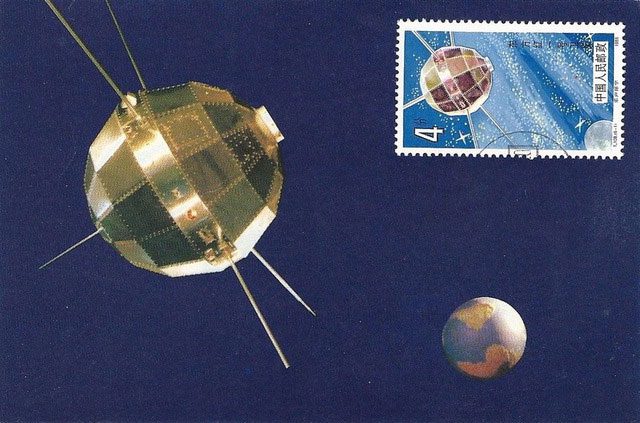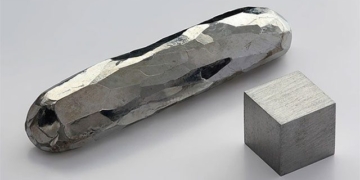The designed lifespan of PRC 1 was only 20 days, yet this satellite has now existed in space for over 50 years. This astonishing fact has sparked profound thoughts among people about the mysterious inhabitants of space.
Dong Fang Hong 1, also known as East Red 1, China 1, or PRC 1, is China’s first space satellite, successfully launched on April 24, 1970, as part of China’s Dong Fang Hong satellite television program. Weighing 173 kg (381 lb), it is heavier than the first satellites of other countries.
Why Was the Designed Lifespan of Dong Fang Hong 1 Only 20 Days?
The human desire for space exploration drives us to continually improve aerospace technology to better understand the mysteries of the universe. However, despite many significant breakthroughs we have achieved, space missions still face numerous challenges. Among these, the designed lifespan of Dong Fang Hong 1 being a mere 20 days is a prominent example. So why were we only able to allocate such a short time for this spacecraft?
Space is a harsh environment characterized by high radiation, extreme low temperatures, solar energetic particles, and tiny meteorite fragments. These factors pose significant challenges to the normal operation of spacecraft. In particular, high radiation can damage electronic components and cause electromagnetic interference, severely affecting various functions of the spacecraft.

Dong Fang Hong 1 is China’s first artificial satellite successfully launched into space. In its orbital flight, it not only accumulated a large amount of valuable data but also captured many stunning images of the universe. This data and imagery are of great significance for space research and scientific exploration.
To prevent equipment damage, these adverse factors must be considered when designing spacecraft to enhance their radiation resistance. The limitations of aerospace technology also play a crucial role in the short operational lifespan of Dong Fang Hong 1. Although aerospace technology continues to advance, some limitations still exist at the current stage.
For instance, regarding battery technology, traditional batteries have limited energy storage capacity and cannot meet the demands of long-duration space missions. This limits the operational lifespan of the spacecraft. Various challenges in space also impose higher requirements on spacecraft design and performance, necessitating more advanced technology and greater investment.

Throughout its journey, Dong Fang Hong 1 recorded a significant amount of data about space and the universe through various scientific instruments. This data includes critical parameters such as cosmic ray intensity, high-energy particle flux, and solar activity.
Additionally, the size and weight of the spacecraft will also impact its designed lifespan. The limited interior space of the capsule requires the spacecraft to be designed to be as lightweight and compact as possible. However, in a confined space, it is challenging to meet all functional and equipment needs. Therefore, in the past, we had to eliminate or reduce some functions and auxiliary equipment to ensure the spacecraft’s performance and operational lifespan.
Although the designed lifespan of Dong Fang Hong 1 is a brief 20 days, it still plays a vital role. This spacecraft can carry various scientific experiment equipment and observational instruments to observe and study Earth and space. Despite the limited time, during its 20-day mission, Dong Fang Hong 1 provided scientists with a wealth of valuable data and accumulated valuable experience, paving the way for future space exploration.

Dong Fang Hong 1 also captured many images of the universe through its dedicated camera equipment, including galaxies, nebulae, planets, and more. These images showcase the majestic landscapes of the universe and leave humanity in awe of its vastness and mystery.
The fact that the designed lifespan of Dong Fang Hong 1 is only 20 days is determined by the impact of the space environment and the limitations of aerospace technology. High radiation levels, temperature fluctuations, as well as the size and weight of the spacecraft all affect its lifespan.
Reasons Dong Fang Hong 1 Has Survived in Space for Over 50 Years
With the continuous development and advancement of science and technology, human exploration of space has become increasingly profound. As China’s earliest communication satellite, Dong Fang Hong 1 has been in space for over 50 years. Behind this achievement is the relentless improvement and maintenance of the satellite by scientists.

In addition to data and images, Dong Fang Hong 1 has also conducted various experiments and scientific explorations in space.
Dong Fang Hong 1 is the first artificial satellite independently developed by China, successfully launched on April 24, 1970, and entered its predetermined orbit. At that time, this was a significant milestone in the aerospace industry of the country and marked a major breakthrough in the field of aerospace. However, ensuring that a satellite operates smoothly and exists in space for over 50 years is no easy task.
In the years since Dong Fang Hong 1’s launch, scientists have made several upgrades to enhance its performance and stability. By improving the satellite’s circuit system and increasing its electrical power, the satellite can better adapt to the space environment and transmit data more efficiently.
To cope with the radiation environment in space, scientists have also designed radiation-resistant satellites to enhance their radiation resistance and durability.
As an operational satellite in space, Dong Fang Hong 1 requires regular maintenance and repairs to ensure normal operation. Through remote sensing technology and guidance from ground control centers, scientists can monitor the satellite’s status in real-time and make necessary adjustments and maintenance. They regularly check various components of the satellite, such as electrical circuits, power systems, etc., and timely replace old or faulty parts. Simultaneously, scientists continue to improve maintenance processes and technologies to enhance the efficiency and accuracy of maintenance.
Additionally, scientists are actively conducting research to improve the working environment and performance of the satellite. They study the impact of solar activity on the satellite and explore new materials and technologies to enhance protection and stability. They also conduct various experiments and verification work to further optimize the satellite’s transmission efficiency and data processing capabilities.

The continuous improvement and maintenance by the scientists of Dong Fang Hong 1 have allowed this satellite to survive in space for over 50 years.
In the future, with the ongoing breakthroughs in science and technology and the continuous development of aerospace technology, we have reason to believe that China’s aerospace industry will achieve even more significant accomplishments.
Scientists will continue to work hard to innovate, continuously improve and maintain space equipment, while making greater contributions to humanity’s dream of space exploration. The successful operation of Dong Fang Hong 1 not only symbolizes the advancement of China’s aerospace science and technology but also represents a significant discovery for the global aerospace industry.





















































